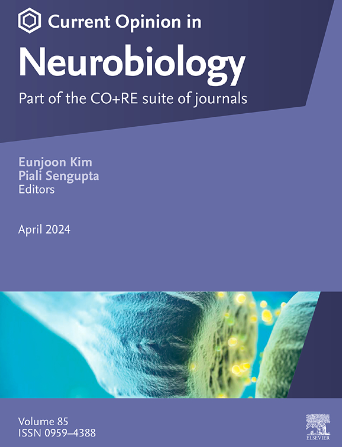Bridging theory and experiment in (statistical) learning
IF 5.2
2区 医学
Q1 NEUROSCIENCES
引用次数: 0
Abstract
Statistical learning and neuroplasticity have been studied extensively over the past decades by theorists and experimentalists working in animal and human experimental models, with neurobiologists, cognitive neuroscientists, and theorists each offering complementary inputs to the field. While there are collaborations between theorists and each of experimentalists working in animal and human models, there are more limited interactions across the experimental groups, with these fields remaining largely siloed. Here, we discuss the challenges for cross-disciplinary collaboration, as well as offer suggestions for ways to facilitate it in the future. We propose that theorists are in a key position to facilitate interactions between experimentalists working in animal and human models by developing theories or working models that span these two fields to enable cross-disciplinary collaboration. Increasing training for early career researchers to become skilled cross-disciplinary collaborators may also help facilitate future interactions in these fields.
(统计)学习理论与实验的桥梁
在过去的几十年里,理论家和实验学家在动物和人类实验模型中对统计学习和神经可塑性进行了广泛的研究,神经生物学家、认知神经科学家和理论家都为该领域提供了互补的投入。虽然在动物和人类模型中,理论学家和每一位实验学家之间都有合作,但实验组之间的互动更为有限,这些领域在很大程度上仍然是孤立的。在这里,我们将讨论跨学科合作所面临的挑战,并就如何促进跨学科合作提出建议。我们认为,通过发展跨越这两个领域的理论或工作模型,理论家在促进动物和人类模型实验家之间的互动方面处于关键地位,从而实现跨学科合作。增加对早期职业研究人员的培训,使他们成为熟练的跨学科合作者,也可能有助于促进这些领域未来的互动。
本文章由计算机程序翻译,如有差异,请以英文原文为准。
求助全文
约1分钟内获得全文
求助全文
来源期刊

Current Opinion in Neurobiology
医学-神经科学
CiteScore
11.10
自引率
1.80%
发文量
130
审稿时长
4-8 weeks
期刊介绍:
Current Opinion in Neurobiology publishes short annotated reviews by leading experts on recent developments in the field of neurobiology. These experts write short reviews describing recent discoveries in this field (in the past 2-5 years), as well as highlighting select individual papers of particular significance.
The journal is thus an important resource allowing researchers and educators to quickly gain an overview and rich understanding of complex and current issues in the field of Neurobiology. The journal takes a unique and valuable approach in focusing each special issue around a topic of scientific and/or societal interest, and then bringing together leading international experts studying that topic, embracing diverse methodologies and perspectives.
Journal Content: The journal consists of 6 issues per year, covering 8 recurring topics every other year in the following categories:
-Neurobiology of Disease-
Neurobiology of Behavior-
Cellular Neuroscience-
Systems Neuroscience-
Developmental Neuroscience-
Neurobiology of Learning and Plasticity-
Molecular Neuroscience-
Computational Neuroscience
 求助内容:
求助内容: 应助结果提醒方式:
应助结果提醒方式:


